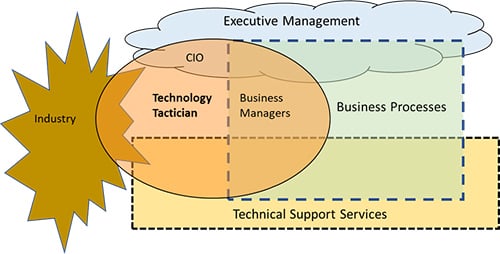Much has been written on the impact of technology during this pandemic, some positive, some negative. The latter focusing primarily on the suitability of the technological infrastructure supporting those working beyond expected norms. Quintessential characteristic of technology is the improvement in the quality of life, which is now under scrutiny. If we do assess it, how do we measure it? Clearly it will vary according to the individual.
Caveat emptor - buyer beware?
Despite the technological murmuration that surrounds the launch of a new system where the subliminal message of ‘you know it makes sense’ had been greeted with open arms, the challenge now is more around ‘does it?’. The assurance of efficacy of business processes using technology is a complex situation to evaluate, certainly not plug ‘n’ play supplemented with introductory training and ongoing technical support.
The impact of computing on business organisations since its relatively short history has been littered with IT failures. The inability to secure successful integration of computing technology has been blamed on a number of issues: staff not wanting to be engaged, supplier focused on sales, staff inadequately trained, applications not ‘fit for purpose’, etc.
Stepping outside this particular ‘blame game’, the pandemic has clearly identified some issues with adopting the technology outside the normal office environment. It is interesting to notice how the nuances of physical staff interaction in the workplace make the technology work; informal support from colleagues on system usage and the interpretation of system notices or temporary inaccessibility.
It is conjectured that the problems start with the basic premise that technology seems attractive, particularly to senior management who often see it as a way of reducing ongoing costs through improved efficiency, which is ironic given our experience. Even now the focus is often placed on CIOs finding ways to provide effective technology uses whether directly through metadata processing or simply supporting the outsourcing of a back-office function.
If it is that obvious then why the failure to deliver improved services? Asking people at the grassroots level you will often here that there is a lack of understanding how it is actually going to work: providing a formula-1 car to do a short daily commute isn’t the answer, although it may make us look good!
Tactical solution
So, how can this be addressed? A possible solution is the development of technology tacticians. Most organisations have a senior executive/CIO to strategise the adoption of technology within the bigger picture of corporate objectives. Most organisations have effective IT support groups to answer queries which are primarily focused on resolving technical issues.
The aim is that the technology tactician (or magician) covers the middle ground between the two and will be argued by many to already exist in many organisations. The litmus test here is that if all bases are currently covered then why wasn’t the transition to remote working smooth, seamless with no negative impact.
This new breed of professional needs to be developed within our educational system, and not a resident employee sent on a staff development training course. The focus for this new breed of technologist should be to occupy the central ground of technology integration.
There are examples of new ‘management of technology’ degrees, often at masters level, that focus on the business uses. Over the years, many undergraduate and postgraduate courses have witnessed the merger of science/engineering with management, which aim to address the issue of ensuring the effective integration of technology. Irrespective of whether this position resides within the supplier or customer organisation the focus needs to be more hybrid:
- Understanding of computer architecture and its relevance to particular organisational models.
- Understanding of effective and efficient business processes.
- The integration of technology and the corporate culture.
- Role of technology in business critical activities.
- The functions and value-add of technical support services.
- Relationship between computer architecture and organisational operational structures.
- Assessing corporate risk analysis to business of technological inadequacies / inefficiencies.
- Role of technology in contingency planning and disaster recovery.
- Relate technological provision and use to corporate strategy.
- Ensure effective integration between technology supplier and corporate procurement.
Ensuring tech integration
The focus should be on what technology can add to an organisation; as such, a technology tactician’s role should not be regarded as a poor relation to computer science. The skills here are a combination of theoretical understanding and practical, industry specific, application. Recognition of a such a post should be the embodiment of a professional society ensuring the effective adoption and integration of technology.


















